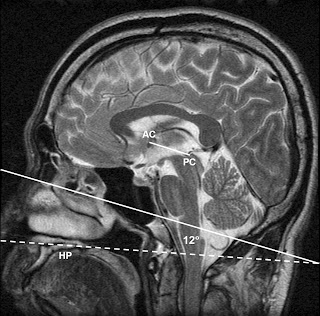Maybe this is merely my interpretation, but I believe the first two years of college for a science student are about teaching you "facts" while the second half is devoted to showing how we can get bad "facts" from a poorly designed study. As a good scientist, one must always examine how the conclusion was reached and whether the experiment is actually sound. I want to give 2 examples of studies which should not be used in modern science- one because the technology is far out-dated, and the other because of a poor subject selection and subsequent experimental design.
The Tilting Table
The first story I want to tell revolves around the famous psychologist- William James. He has been quoted for his many insights into memory and cognition though very poetic language. But did you know he also tried to create the first MRI in the 1890s?
Imagine a man lying on a perfectly flat table which has been balanced beneath him. James then asked the man to think either about some emotional aspect, or to do a series of logical puzzles. If this went on long enough, the table would tilt towards the head, as if it had become more heavy. This was the first attempt to understand blood flow as a mechanism for measuring what is being activated.
Keep in mind, this is beyond rudimentary. It was an extremely clever idea at the time, but has since been outdated with PET scans and fMRIs. The reason I include it under the heading "bad science" isn't because I'm not impressed with William James. On the contrary, I find him a fascinating individual. But I wanted to demonstrate that technology continually advances. To use outdated technology in a modern experiment can alter the results in a way that is unknown to the experimenter. The newest technology isn't always the best but we can't use outdated methods if we expect our work to be taken seriously.
The Talairach Brain
Within the past week, I have heard the Talairach brain mentioned at least 3 times and never with any reverence. And when I learned more about it, I was astounded that anyone would keep it in use as an atlas for modern studies. Here is, in my opinion, an example of science at its worst.
Talairach is the name of the researcher leading in the creation of this atlas. An atlas, in neuroscience terms, is a model brain by which you can standardize the areas of activation found using fMRI studies. It's a template that you lay your own images over to map where you say activation.
 |
| Here is an example of a structural scan using an MRI. I believe the Talairach model has been overlaid on the original. |
But the Talairach model is a terrible choice. Talairach used only one subject for his template whereas most modern research uses multiple brains which are averaged together to create a model more standard to the population. The second problem with Talairach was that he used the brain of an alcoholic woman- which by no means has the same structure and function as a normal, healthy brain. And as if that weren't bad enough, Talairach didn't even scan her entire brain. He actually just scanned one hemisphere and then flipped it over to create a mirror image. Normal brains have slightly different function and structure across the hemispheres. This is a fact that Talairach completely disregarded in favor of ease.
The sad part is there are still some studies today which use the Talairach brain atlas. Many other atlases have been created since then but the old design persists. This is why it is important to understand what you are reading in scientific literature and be able to critically analyze it. Not every published paper is without its faults. This is an important lesson that I believe the lay public is not enough aware of.





























